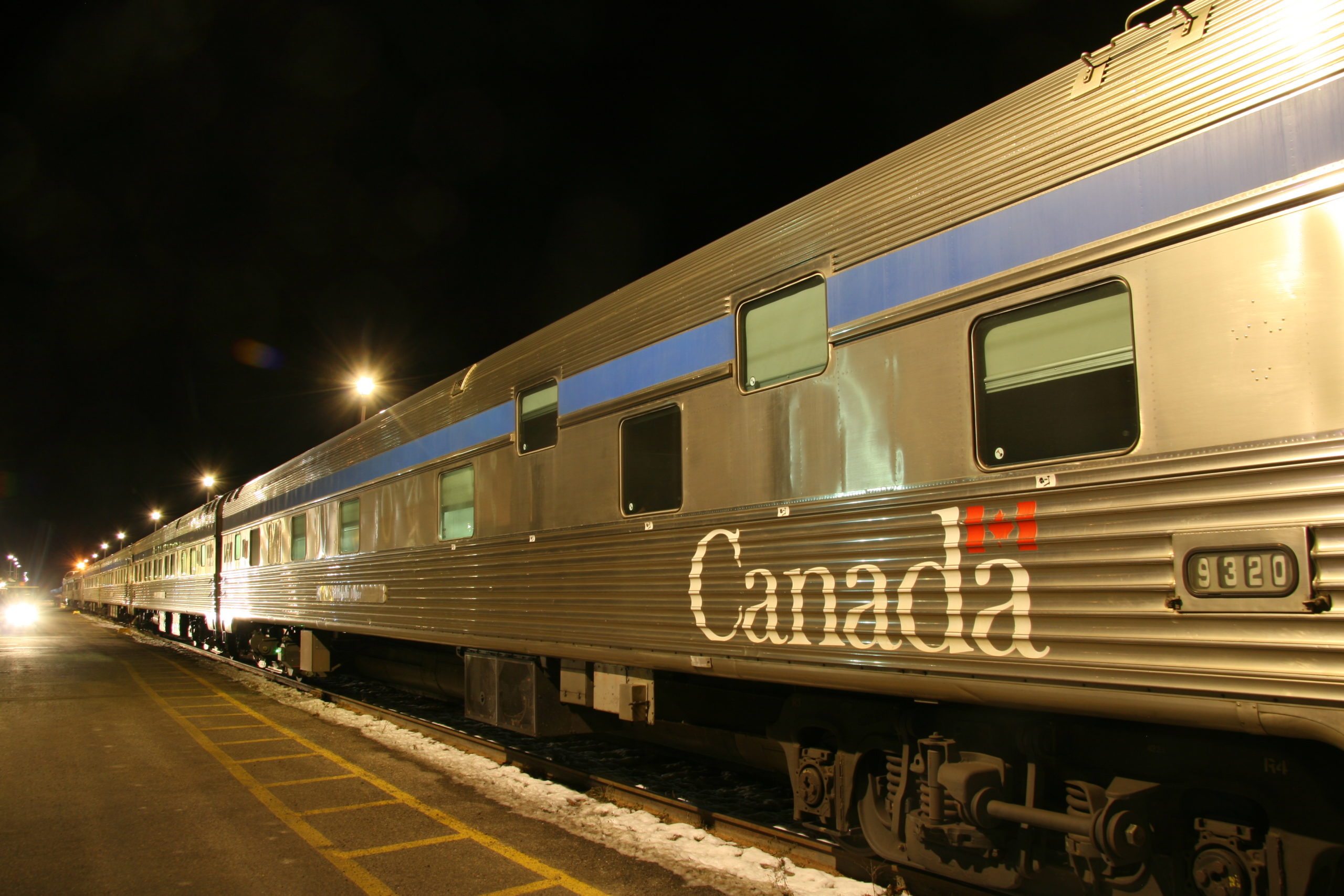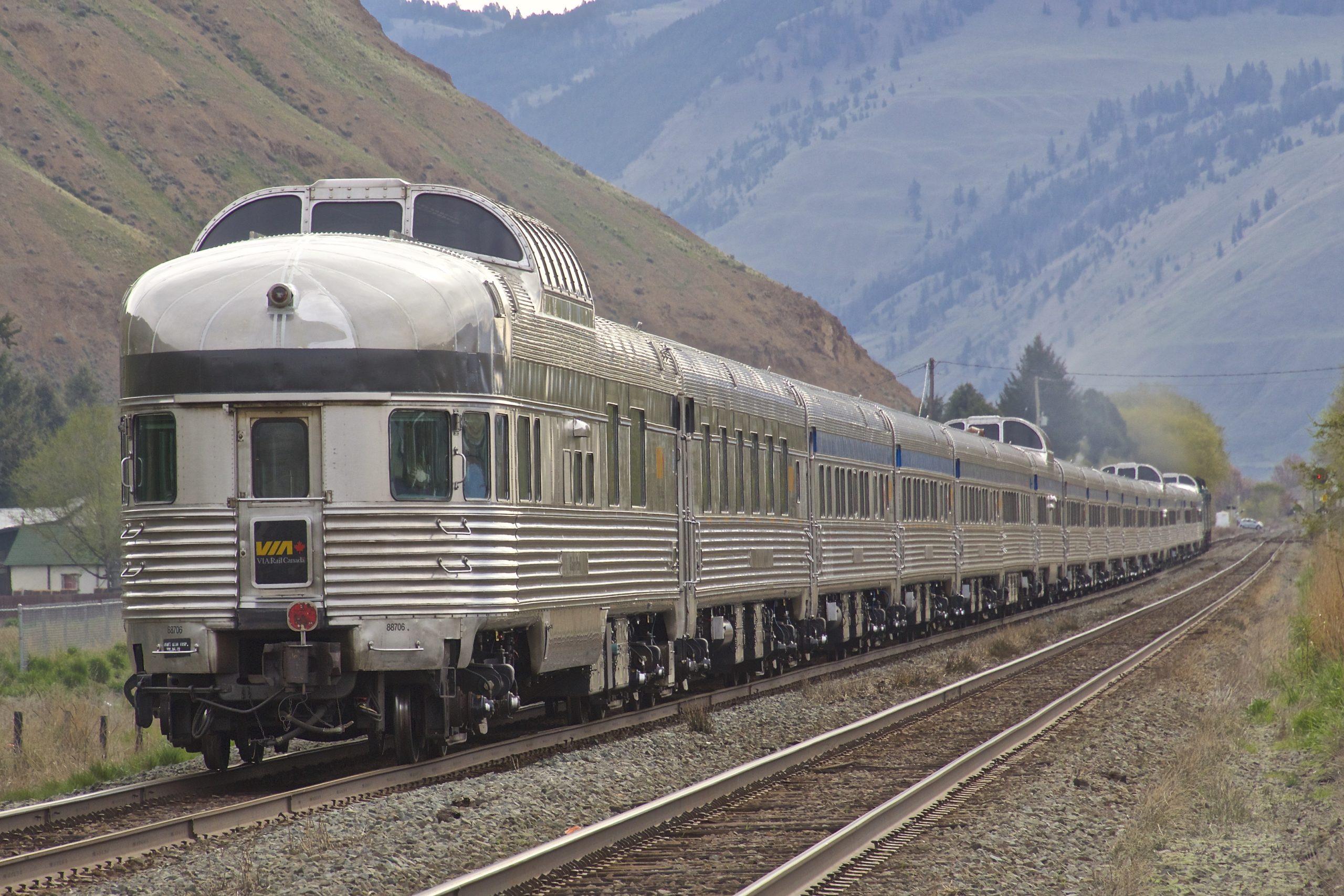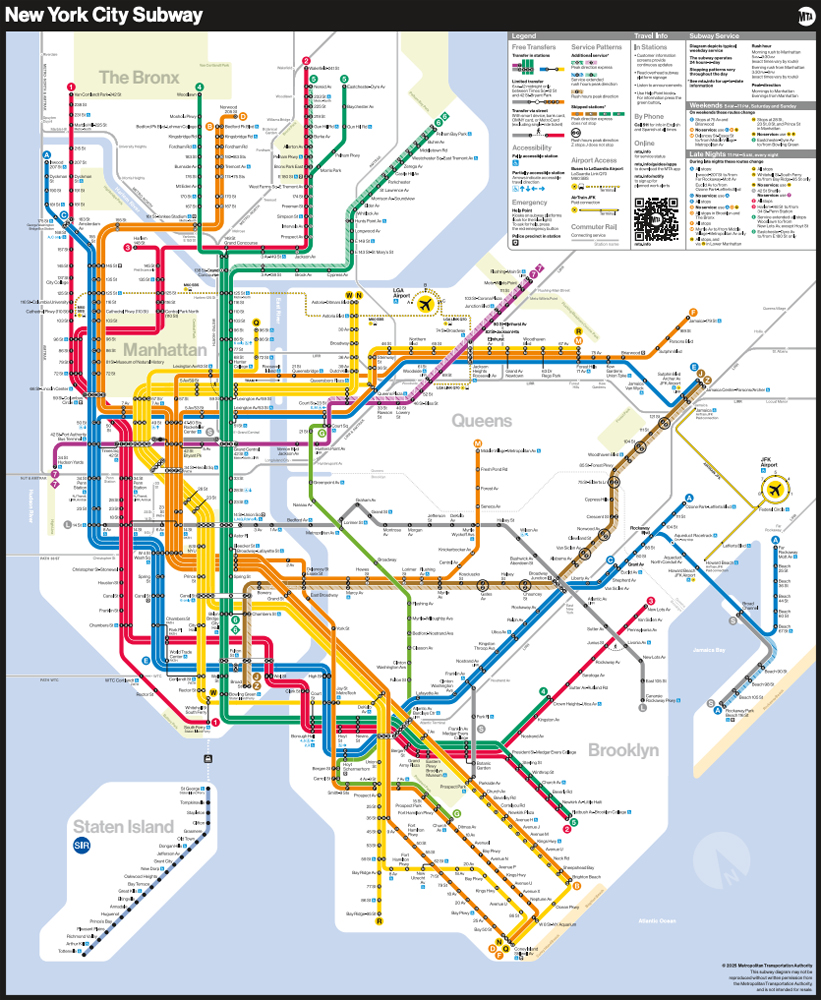VANCOUVER, B.C. — If you had any doubt that VIA Rail Canada trains are suffering schedule setbacks, look no further than the Aug. 6 Canadian that arrived in Vancouver nearly 24 hours late.
The VIA Rail transcontinental flagship was scheduled to arrive Saturday morning at 9:42 a.m., instead showed up at 8:15 a.m. Sunday, Aug. 7.
Although this is the most extreme instance of running “off the advertised” since Trains News Wire began logging every Vancouver and Toronto tri-weekly arrival on May 23, it illustrates a worst-case scenario of what can happen when neither government statute nor financial incentives and penalties compel a host railroad to prioritize passenger trains and run them on-time.
In Canada, contractual agreements between VIA and its principle host railroad, Canadian National, are proprietary (as are Amtrak’s pacts with U.S. lines) and aren’t available for public scrutiny. But Toronto transportation consultant Greg Gormick says that former CN president and CEO Claude Mongeau told readers of the London, Ont., Free Press in May, 2016, that VIA pays CN “less than $25,000” for each Canadian.
Attaining a goal of 80 percent on-time performance, Mongeau argues, “would require public investments of a few billion dollars to add many more sidings and some large sections of double-track. Or it would require CN to impede Canada’s trading economy to give way to VIA’s transcontinental passenger trains.”
So if it can’t be 80 percent, what kind of on-time percentage does CN handling of the Canadian deliver for the $5.1 million (in U.S. dollars at current exchange rates) that Mongeau says the railroad gets from VIA annually?
Try 7.7 percent. The number represents the five of 65 trains that were early or on-time between May 23 and Aug. 6 arriving into Toronto or Vancouver. Schedules were lengthened by 12 hours several years ago — padded to better mesh with slower freight train speeds and add recovery time at major intermediate stations in a valiant attempt by VIA to improve reliability.
Trains News Wire data reveals that the most significant delays occurred into Toronto, where the Canadian equipment turns back westbound the same day when running triweekly (through mid-October). Because VIA doesn’t have a trainset to spare, Toronto boarding passengers are forced to sit around in the wee hours well past the scheduled 10 p.m. departure time while the train is serviced, further inconveniencing travelers who pay about $8,000 for a Prestige Class cross-country bedroom or almost $2,000 for a lower berth.
Toronto’s tight turn also creates cascading tardiness. After westbound departures at 2:08 a.m. and 3:26 a.m. the last week of July, the Aug 1 Canadian left Toronto at 10:46 a.m. on Aug 2, and still managed to lose another 12 hours heading to Vancouver. For a time, VIA claimed delays were related to British Columbia forest fires, but a B.C. source says the only affected route has been on ex-BC Rail CN tracks north of Lillooet, B.C. over which the Canadian doesn’t run.
Disrespect for people’s time not only impacts future revenue but punishes VIA’s bottom line immediately with out-of-control onboard and operating crew expenses, extra maintenance facility overtime, and paying for rooms at Toronto hotels to house passengers waiting to depart.
Neither Canadian Transport Minister Marc Garneau or Prime Minister Justin Trudeau’s recent appointments to VIA Rail Canada’s Board of Directors have shown any inclination to get involved. VIA president and CEO Yves Desjardines-Siciliano told TRAINS last year he won’t challenge CN at the Canadian Transport Agency because, “You can’t manage business relationships through court orders — they should be based on mutual respect, confidence, and a true desire to be helpful.”
So switching the Canadian to its former, more populous Canadian Pacific route east of Winnipeg must be considered. Toronto-Winnipeg running times from 1989, when VIA’s Canadian last used the CP through Thunder Bay, Ont., were three hours shorter than the slower schedule CN has repeatedly shown it won’t keep today.
Desjardines-Siciliano did say in April 2016, “We have not approached (CP) formally because (switching routes east of Winnipeg) is not a service-defining component.”
With the latest delays, now it certainly is. Of course, commercial and statutory underpinnings of hosting passenger trains in the two countries are different. But given CN’s treatment of the Canadian this summer — contrasted with CP’s 90 percent-plus on-time performance average in handling Amtrak’s Empire Builder and Hiawathas during the last two years, exploring a reroute is essential. If VIA won’t fight, it’s time to at least switch.















I`m afraid its the time that improving the Canadian service will be far too expensive in today`s economy compared to 50 years ago it ran at a faster speed. It will cost 10s of billions to add and straighten the existing tracks especially across rugged northern Ontario. It will be far by cheaper if VIA could introduce a package deal with Westjet or Air Canada .to transfer passengers from Union Station in Toronto to take the new UP Express train to the airport and fly out to Edmonton, Alberta where the Canadian commence rather from Toronto. The scenery is not superb between Toronto and Edmonton compared to the rest of the distance to Vancouver.
Here’s another interesting comparison based on the data shown in the chart here:
https://wawa-news.com/index.php/2017/08/03/brutal-treatment-by-cn-is-damaging-vias-flagship-canadian-train-all-across-canada/
One of the data points is that each VIA Canadian operated runs 2,680 miles, a mere 99 more than each Empire Builder (which includes both the Seattle and Portland sections of the train). Overall the big difference in train miles operated each year has to do with that the Empire Builder runs daily, whereas the Canadian only 2 or 3 times per week. On average, the Empire Builder is scheduled to operate about half again as fast as the Canadian (48 MPH vs. 32 MPH). But in reality, the Canadian is even slower as it’s often late. Case in point today, September 28.
VIA train 2 should have arrived in Toronto at 0930 09/28, but at its last report was 10.5 hours late departing Washago, the last stop prior to Toronto (an accurate Toronto arrival time was not given at http://reservia.viarail.ca/tsi/GetTrainStatus.aspx?l=en&TsiCCode=VIA&TsiTrainNumber=2-&TrainInstanceDate=2017-09-24). This lateness has not been unusual; in fact it’s more the norm than not. But here’s the comparison between VIA train 2-24 and eastbound Empire Builder trips, operating nearly the same distance, during the same timeframe:
· Amtrak train 8-24 departed Seattle on time at 1640-24, 3 hours 40 minutes before the departure of VIA train 1-24 at Vancouver. When train 8-24 arrived at its terminus of Chicago at 1538 (17 minutes early) on September 26, VIA train 1-24 was just east of Watrous, Saskatchewan.
· Amtrak train 8-25 departed Seattle on time at 1640-25. At the same time, VIA train 1-24 was just about to depart its station stop of Jasper, AB. When Amtrak train 8-24 arrived in Chicago at 1549 (6 minutes early) on September 27, VIA train 1-24 was somewhere between Sioux Lookout and Armstrong in Ontario.
· Amtrak train 8-26 departed Seattle 43 minutes late at 1723. At the same time, VIA train 1-24 was just east of Melville, Saskatchewan, due north of the Empire Builder stop of Stanley, North Dakota, where Amtrak 8-26 would not depart until 2009 the following evening. It arrived in Chicago at 342 PM, 13 minutes early, well before VIA train 2-24 got to Toronto.
Of course, these are anecdotal observations, but over the course of the recent chronic late-running of the Canadian, it’s not a stretch to observe that in the time frame that it takes VIA to operate one train from Vancouver to Toronto, Amtrak operates three Empire Builder trains, each running nearly the same distance.
The sluggishness of the Canadian is interesting, and appears to be more focused on the east end of the railroad. Edmonton to Winnipeg should be a relative racetrack due to the topography. It’s 793 miles. In 1967, the Super Continental made the trip in 17.5 hours, or 45 MPH. VIA train 2 of 09/24/2017 took 22 hours, 23 minutes to make the same trip, or at 35 MPH, making probably 7 intermediate stops (where time is showing on the VIA document). In comparison, Amtrak train 8-26 made the trip from Glacier Park Station to Grand Forks (810 miles distant and the closest Amtrak stop to Winnipeg) in 13 hours, 36 minutes or at nearly 60 MPH average speed with 11 intermediate stops.
Again, some anecdotal, but telling comparisons.
It does not take more than 3 hours to service the train in Toronto. but the crew is entitled to some rest. The alternative would be to keep the crew in Toronto [their away from home terminal] for 2 to 3 days for the next train.That would not be popular.
I took this train in February, 2003 from Toronto – Vancouver & return. It was on time. However, we went through the Rockies at night so we didn’t really see anything.
After reading these various comments by blaming each other such as governments, private citizens, rail corporations, etc. Canada is a vast harsh country with many areas unsuitable for populated settlements. its understandable why Canada`s only transcontinental train service is in jeopardy today. We must realize that this is now a younger greedy generation that executives from CN, CP, BNSF and so on generally do not care about improving infrastructure for passenger service by just caring for themselves of their own profits. Therefore nothing will happen down the road to upgrade long-distance costly operating passenger train service in any remote areas throughout the world. It would not be surprisingly if VIA`s Canadian will continue to scale down even further in the next decade. Its just costing more to operate a money-costing long-distance passenger train than ever due to higher cost of equipment replacement. More likely The Canadian may operate just twice month in the summer months only with overnight stops at exclusive hotels to avoid subsidized taxpayers costs when over 99 percent of taxpayers will never use that train. Meaning it may take at least a week to travel that entire route one way with a substantial cost of at least $15,000 each way. Otherwise The Canadian may have to be split up into newer shorter routes between cities out west where it won`t be as costly such as between Edmonton and Calgary, Regina and Winnipeg such as on how VIA had successfully operate the Quebec-Windsor Corridor at a sufficient cost. The best option in the meantime is hopefully the financially successful Rocky Mountaineer could operate a luxury train at about six times per year between Banff and Toronto by using the world-class scenic Lake Superior route whereas the existing northern VIA line on the northern CN route is not as attractive. Once new logging roads are built to these rail-only accessible communities in that part of northern Ontario that is when passenger rail service can return to the superb scenic Lake Superior route on the CP line. Let`s face it, operating a long-distance passenger train service on rarely used sparsely populated centers is no longer feasible in today`s higher costs. Sooner or later there will be newly invented alternative transportation modes such as electric vehicles and likely solar aircraft in several decades from now that will even further insult long-distance passenger trains anywhere
I can’t believe that the people and the government of Canada doesn’t complain about the horrible operation of the Canadian. VIA and CN should be ashamed of themselves for this sorry state of affairs. If this continues, I predict that people will stop taking the train and VIA will cut service even more on the Canadian and other trains as well. Then, I’m sorry to say that Canada will become the only first world country without train service. Oh! Canada! Please don’t let this come to pass!!
This is a sad but true story, especially for those of us old enough to remember the real Canadian, when it was operated by CPR on a 70 hour schedule to Montreal, and 67 hours to Toronto, running seven times a week in each direction throughout the year. In those days it was one of the finest trains in the world, and it was almost always on time, even in winter. (I know because for three years I lived within sight of the route which the Montreal section of the train used through Ottawa) Today with its poor performance, aging rolling stock, ugly locomotives, and the much less scenic Canadian National route, it is a national embarrassment. Why anyone would pay $8000 to ride on it is certainly a mystery to me. In fact hardly any Canadians do ride on it: the clientele is American, European, and Japanese with very few exceptions.
More details from the May 23 through Aug 2 period: 70 % of the Toronto arrivals were more than 6 hours late; 70% of the Vancouver arrivals were more than 3 hours late.
I think this shows that running a high end high cost rail cruise is not a viable solution. I rode VIA way back in 1984 when the communities along the way still used the train. Reminds me of the ending of “Atlas Shrugged”.
The biggest difference between CN and BNSF is shareholders. CN is now a private corporation responsible to shareholders who only want to know what you have done in the last 3 months. CN has capital budget of about $2.7B and adds about 10 miles of double track a year.
BNSF has one shareholder who believes in the long term viability of his companies. When the EB had a meltdown a few years ago as pointed out above, they announced they would add 300 miles! of double track and it has paid off. I just road the EB westbound and what an impressive piece of railroad it is on the new double track west of Minot, as is the line through Devils Lake.
When Amtrak was started it was given some power. VIA has none. It is at the whim of whoever is in government. If any bus company, airline or other passenger, Rocky Mountaineer complains VIA always loses. VIA did try to add services from Edmonton to Vancouver and was denied.
CN was adding quite a bit of double track in the 70’s and 80’s and was abruptly stopped and some nearly completed sections weren’t completed, even what was done was picked up. There was one section from the east gate of Jasper National Park to Valemount BC of 125 miles but then EHH came along and took parts of it out. He made longer but fewer sidings. The plan was to run longer but fewer trains. The trains got longer alright but there are just as many trains and is quite congested on the mainline now. Just ride the train and see!
There was an article comparing the EB to the Canadian for speed. The fact is USA transcontinentals have always been considerably faster than Canada. 46 MPH to 32MPH. The CP Canadian was 40 MPH. The fastest times in Canada were on the CN at 44 MPH in the 1960’s. The Great Northern #31 was 42 hr 50 min Chicago to Seattle for a 51.6 average.
Amtrak long distance trains are very much more a passenger service than anything VIA has in the west. Amtrak has conductors and even asst. conductors and can back out of stations without the engineer having to walk back there and then wait for him to get in the engine again because he can’t walk through. Amtrak has people to handle the baggage at intermediate stops, on VIA one of the engineers has to do it. Our EB was 10 cars 2 units. From the front – 3 sleepers -diner -2 coaches – sightseer lounge – 2 coaches – 1 sleeper. The coach passengers have access to the diner and lounge. Over 300 in coach close to 500 passengers. I could go on and on but better stop.
I, for one, would be very happy if the CANADIAN went back to the pre-1990 CP routing. The CP would allow Americans to access Banff and Lake Louise, with a local (if the Rocky Mountaineer people would allow it) would allow the SKEENA to have its’ equipment cycle to/from Vancouver for servicing. The cavalier attitude of the CN upper management regarding the trains’ shoddy timekeeping should not be rewarded. A freight shipper gets to change their mind when the service falters; why not VIA?
Canadians should be ashamed of what their tax dollars are paying for in this case. How do you have not enough equipment for a spare set in Toronto? If there’s that much of a car shortage, it’s time to buy new equipment.
Just my opinion, folks…
why the silence of government employee Malcom “CUNNING” who is so effusive when it concerns anti USA government concerning the same class of issues facing our Canadian friends?
You make it sound as if VIA would be doing CP a favor if The Canadian routing was switched. I doubt if CP would go easily. $5.1 million to a corporation the size of CP “don’t amount to a pee hole in the snow” as we use to say in northern Maine. I doubt if it comes close to covering the expense of running the train. CP is arguably the better route both time wise and scenery wise but the switch won’t be easy. 24 hours late is ridiculous but The Canadian provides little if anything in the way of meaningful travel use any more. It is mostly a tourist operation and probably should be turned over to the Rocky Mountaineer people to operate and let VIA operate the Quebec – Windsor corridor. It’s too bad that this has come about. I rode both The Canadian and the Super Continental back in the day and they were both great trains even if they hauled mostly tourist back then too.
This is the result of a slavish devotion to squeezing the last possible dime out of the railroad’s infrastructure. Cutbacks in the miles of double track, passing sidings, etc., has left CN and most U.S. railroads without the infrastructure they need to actually do the job they have been given by the regulatory agencies and the public. Much the same thing has happened in the U.S. and will be getting worse now that Mr. Harrison is in process of destroying CSX. The CEO’s of the corporations live and die by their quarterly corporate financial reports. They have so much incentive through stock options that they actually couldn’t care less what happens to their customers or to the public. They just want to do things that drive the price of their stock up, in the short term.
It seems that adding one set of equipment would help. Also, if you want to ride, you better ride eastbound, especially to see the Rockies in daylight.
In 2013 and 2014, Amtrak’s Empire Builder was experienced chronic severe delays, mostly due to ballooning traffic largely due to the Bakken oil boom centered in North Dakota. Additionally, the 2013-2014 winter was one of the worst on record. The train ran hours late, and Amtrak even added a sixth set of equipment and lengthened the schedule. In May of 2017 (the last month that figures are available on the Amtrak website), endpoint on time performance for the Empire Builder was just over 70%. Not great, but only one other Amtrak long distance train (Auto Train) fared better.
Why did things improve for the Empire Builder? Because, more or less, people demanded it. The train provides the only public transportation for many online communities, and until this ongoing service disruption, was the most-ridden long distance train in the Amtrak system for ten years running (2004 to 2013 inclusive, and again in 2016). BNSF realized that along the route, the Empire Builder is considered the “canary in the coal mine” when it comes to gauging how things were going on the freight railroad. Indeed, freight customers were complaining, but all the newspaper articles from online papers about Empire Builder delay (in communities where it is considered a vital service) bolstered their contention that BNSF didn’t have enough infrastructure or resources aimed at the problem, and that it needed to be rectified. As a result, BNSF rebuilt and added hundreds of miles of track creating what is nearly an all double track (or two main track CTC if you prefer) railroad between Savanna, IL and Williston, North Dakota. The pricetag for infrastructure alone in this area was about $5 billion. The most visible improvement was BNSF’s Devils Lake subdivision which was given up for dead a decade ago when BNSF intentionally didn’t run anything but Amtrak on it (between Churchs Ferry and Devils Lake), and was threatened by the rising waters of an inland sea called Devils Lake. In the end, BNSF, Amtrak, and even government entities chipped in to raise the track to a point higher than it could ever go (if it gets to a certain level, the lake would naturally flow into the Sheyenne River drainage). So, even though Amtrak’s Sunset Limited bypasses Phoenix, Arizona (with a metro area population over 4 million because it’s not on the main UP freight line), the future of the secondary BNSF main line used by the Empire Builder through Grand Forks and Devils Lake is assured as the Empire Builder now drifts over part of Devils Lake east of Churchs Ferry at 79 MPH.
So if there is a problem with CN infrastructure or operations, why isn’t it being fixed much as was the case with the Empire Builder? Answer: Because no one cares.
Sure, we hear about the late Canadian a lot in forums like this and other railroad-related blogs, but actual news stories are rare (such as this one from a small newspaper in Northern Ontario : http://WAWA-NEWS.COM/INDEX.PHP/2017/08/03/BRUTAL-TREATMENT-BY-CN-IS-DAMAGING-VIAS-FLAGSHIP-CANADIAN-TRAIN-ALL-ACROSS-CANADA/ ). This is in stark contrast to when the Empire Builder was being delayed. A Google search even today will reveal numerous articles about past Empire Builder delay in the Bakken. But the difference between the Empire Builder and the Canadian is utility. The Empire Builder runs every day. There are still numerous staffed stations along its route, and just about all those that aren’t have a lighted, heated waiting area (often with restroom facilities) in which to wait for the train. Except for Glenview, Illinois and Milwaukee, Wisconsin which have restrictions for local travel to Chicago, all Empire Builder stops are positive ones where a passenger can literally make a reservation an hour before departure time, go to the station, and get on the train. And local communities use the train. More people use the two daily Amtrak trains in Shelby, Montana (population 3,000) than they do the two in Topeka, KS (metro population 234,000) and more use the Empire Builder in Whitefish, Montana than the Texas Eagle in Dallas, TX (which alone has twice the people as the state of Montana). We know about who uses the Empire Builder because Amtrak publishes monthly and annual ridership data for its trains and individual stations.
Things are different along the route of the Canadian. There are only 7 staffed stations along the entire route (including the endpoint cities). The train operates only 2 or 3 times a week, depending on the time of the year. Station amenities are few. Most stations are just “mile post” locations without a platform or heated shelter. Most station stops are restrictive requiring reservations to be made prior to when the train leaves the previous staffed station. In the case of the segment between Capreol (Sudbury), Ontario and Winnipeg, that’s a travel time over 24 hours! Most of the accommodations on the Canadian are sleeping cars which can be priced anywhere usually from $2,000 to $8,000 for a Vancouver-Toronto trip. Coach travel under most situations is so minimal that in the winter, one 60-seat coach handles all who would venture a trip. And, the Canadian is very slow, whereas the Empire Builder runs close to its standard post-WWII timing. (Amtrak can ticket you to ride from Vancouver, BC to Toronto – via the Empire Builder, Lake Shore Limited and other connections – on a faster trip than the Canadian, and can sell you a ticket for travel ANY day of the week!) So, there is very little local travel on the Canadian, which actually is pretty much just based on anecdotal reports because VIA chooses not to publish ridership for individual stations. (It is available – to Canadians – through a cumbersome process that the requester has to pay for.)
That’s why now that the Canadian is again not performing well, it’s largely just a topic in forums such as this. Most on line communities have forgotten the service exists long ago, or just never consider it as a viable method of transport. Sure, some tourist operators might care (doesn’t reflect well on a travel agency selling an $8,000 Prestige Class ticket when boarding at Toronto is delayed until 400 AM and then train arrives in Vancouver a day late) but pressuring an operating railroad change things or having the federal government legislate to appropriate more money for something really isn’t too popular for a high-end service inaccessible to most communities along the route.
As a result, CN is getting away with what they can. Sure, VIA doesn’t pay CN enough to run the train on time, but Amtrak doesn’t pay BNSF enough to treat the Empire Builder like they do. But BNSF knows what the Empire Builder means to online communities, so a modicum of schedule adherence needs to occur. CN knows what the Canadian means to its online communities, too. That’s why they can pretty much do whatever to the train without fear of retribution.
I blame Canadians (the citizens) for allowing this to happen. On more than one forum, I have witnessed how they and others are blinded by the allure of dome cars and observation cars and gourmet dining while the nuts and bolts of what a passenger train should be and who it should serve and how often it should serve them was ignored. More than once, I have heard Amtrak trains badmouthed by riders of the Canadian because if its superior onboard amenities. Yes, the Canadian is a fun train to ride (when it is moving, which is happening less and less often, apparently), but without utility, it has no base clientele in online communities to rally to support it and force change, as was the case with the Empire Builder.
You reap what you sow. And now all the apathy around allowing the Canadian to become the current unnecessary entity that it is seems ready to harvest. But just like the Canadian nowadays, that’s not a crop most want to buy.
I know that 17 years is eons ago, in the railroad business, but I rode the “Canadian” on it old 72-hour schedule and arrived in Vancouver on time. It was a fabulous trip, but I won’t do it again on its current schedule.
Down here in Illinois, we have poured millions of Federal and State dollars into improvements on the Lincoln Service Corridor. I took my grandsons to Springfield from Dwight. I noticed that trains 300 and 301 arrived at their destinations on time. 303 was scheduled into Dwight about five minutes late. However, the UP dispatcher put it in the siding north of town and we waited about another fifteen minutes so UP could move a stack train north. It could have held that train in Odell and we could have ended up in Springfield on time. But that made us late enough to be held in the siding at Normal for a 2 1/2-hour late 302 and a 1 1/2-hour late 22 right behind him, making us 35 minutes late arriving in Springfield.
Eventually, the entire corridor will be double tracked. But I feel the improvements that the government is paying for should be benefitting Amtrak, not the UP.
I agree with both comments. While profitability and high margin (as reflected by low OR) is essential to investment in capacity, the short term blindered slavishness to quarterly results and nothing else is strangling the railroad business. And this problem is not restricted to the railroad business.
Mr. Magnell is partially correct, but what it really speaks to is shortsightedness on the part of CN(if not all RR management), because they focus on the short-term they don’t see the benefit to their own freight business is maintaining and running any passenger service at a premium. I can guarantee you that if CN upgraded the infrastructure on it’s own to accommodate a 90% on-time arrival for the Canadian that they could then correspondingly increase the service offerings of their own freight business(perhaps it would work more in the U.S. than Canada, but it would work, it’s almost like Business 101).